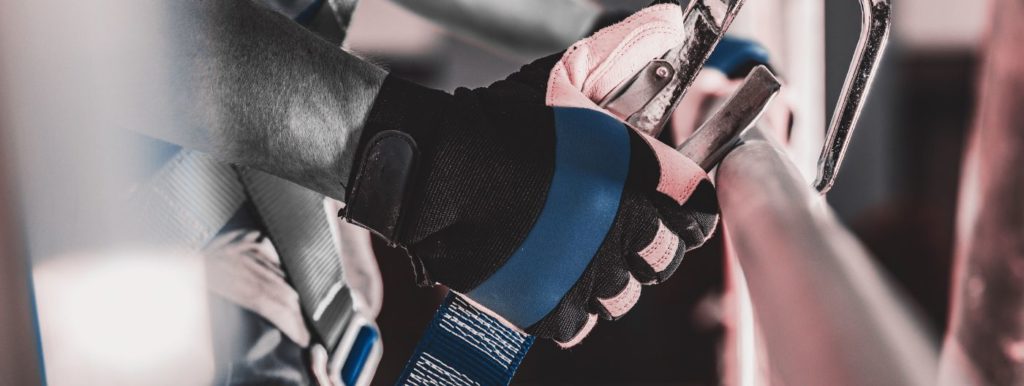
Height safety competency is a life-saver when it comes to working-at-height.
That’s why the input, advice and assistance of a “competent person” is a requirement under the Australian Height Safety Standard AS/NZS 1891.4 – especially when it comes to installing and/or first using height safety systems and equipment.
Despite this, there are several challenges to finding a genuinely “competent person”.
Height Safety Competency Challenges
1. Lack of height safety industry regulation
The height safety industry desperately lacks regulation and oversight.
For example – under the Work Health and Safety Regulations 2011, work at height systems are not included in the list of plant that needs to be registered. This means that something as crucial as an anchor point – which is a single point of failure and core component of any height safety system – does not qualify for registration.
This lack of regulation is concerning, given that a poorly installed, faulty or non-compliant anchor could be the difference between life and death.
2. No licensing regime for height safety professionals
Whilst there is excellent height safety training available – and industry bodies that work hard to set and uphold standards – there is also no mandatory professional licensing regime in Australia.
This means that anyone (in theory) can install height safety systems and equipment, regardless of their experience and competency level.
Consequently – and we see this all the time as height safety inspectors – there are far too many non-compliant height safety installations out there where so-called professionals haven’t met height safety regulations or employed safe practices.
3. No clear definition of height safety competency
Given the above industry challenges, we must for now rely on this requirement to utilise a height safety “competent person”. But again, we run into headwinds – this time in the form of ambiguity around the definition of a “competent person.”
There is no trade-level qualification or degree to act as the standard for height safety competency. And just completing height safety-related training is nowhere near enough. This makes it difficult to easily and consistently assess and determine whether someone is truly competent.
So what can we do to find our height safety “competent person”?
Canvasing for height safety competency

1. Accurately define height safety responsibilities
To ensure that someone is competent to perform any task or role which involves height safety or working at height, we need to understand the responsibilities associated with it. These will vary of course, but may include some or all of the following:
- Designing, specifying, manufacturing, installing, or modifying work areas where fall-from-height risks exist or where plant is to be installed in such areas
- Designing, specifying, manufacturing, or installing equipment, including safety equipment, in areas where fall-from-height risks exist
- Off-site supervision or management of persons who may be exposed to fall-from-height risks
- Connecting to or using either a work positioning or fall-arrest system
- Installing control measures, either temporary or permanent, to reduce the risks associated with working in areas where fall-from-height risks exist
- Participating in first response rescue methods
2. Filter for sufficient length and depth of experience
Professional height safety training is, of course, a must and a given. But as you can see, most if not all of the above responsibilities are well beyond the scope of even the most advanced height safety training alone.
So to find our “competent person”, we must look also for length and depth of experience. And we’re talking about recent and regular hands-on experience. This is not someone who occasionally works at height. It’s someone who’s either a professional in the industry or works at height on a weekly basis as part of their job.
3. Drill down on application of height safety smarts
No two height safety situations are the same and often we need to problem-solve in real-time. So we’re looking for someone who really knows their stuff and is a proven performer in the real world. They should have an impressive array of height safety knowledge and skills at their disposal – and know how to use them.
At Height Dynamics, here’s the five levels of demonstrated height safety competence that we look for:
- Demonstrates a full and comprehensive understanding of all the legislation, standards and codes of practice relevant to height safety
- Able to identify the key criteria for knowing when to implement controls designed to reduce the risk of falls. These include being able to identify physical hazards and all areas where fall risks may occur
- Accurate assessment of risks of conducting tasks in areas where falls from height may occur. This includes task-related and work area-related risks
- Able to identify and implement hazard isolation and risk control measures for both the work environment and access method/system utilising hierarchy of risk management principles. This includes demonstrated competence in pre-use inspection of height safety equipment and correct selection and fitting of harnesses, lanyards, connectors, anchorages and PPE. Also includes demonstrated competence in selecting and correctly installing fit-for-purpose height safety or access systems
- Able to apply first-response rescue methods. This includes demonstrated competence in performing site-specific rescues and correct selection and use of communications systems for contacting emergency services
4. Put a spotlight on past performance
Last but not least, take a closer look at their track record. Are their installations still compliant? What do past employers, colleagues and/or clients say? A “competent person” doesn’t leave a trail of destruction in their wake!
